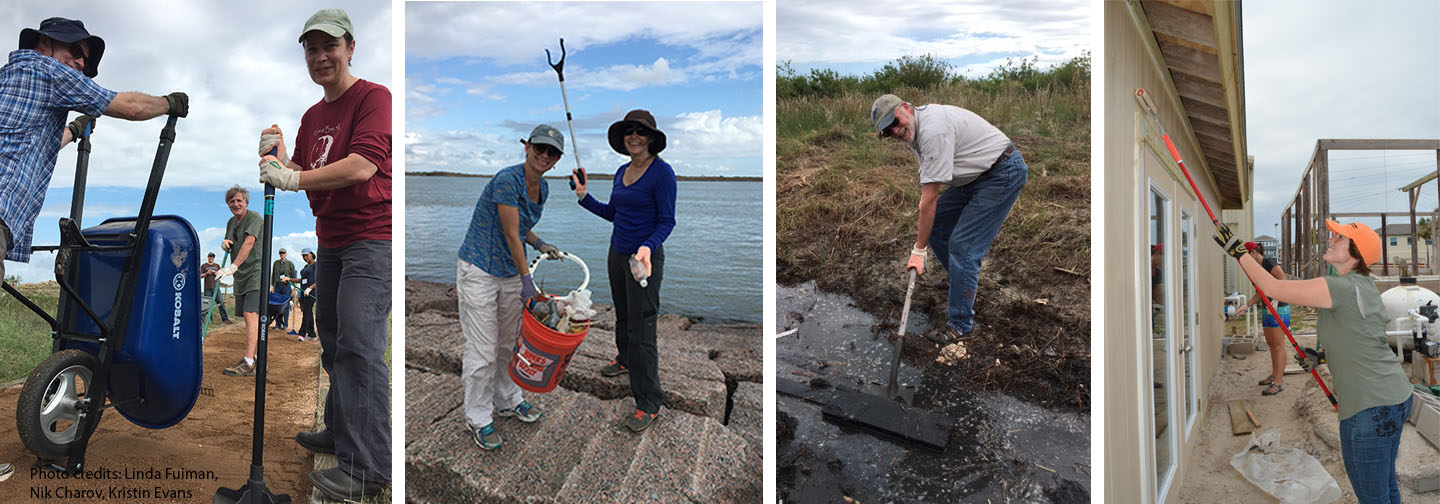The hurricane destroyed many homes and offices in Port Aransas, Texas. The offices and laboratories at The University of Texas Marine Science Institute were not immune from the destruction. There is no shortage of clean-up efforts that need to be done. Despite the damages, the University’s Mission-Aransas Reserve decided to continue to host the annual meeting for the National Estuarine Research Reserve System.
There are 29 Reserves around the country and due to the large size, the annual meeting was hosted in Corpus Christi at the Omni hotel, but meeting organizers saw a unique opportunity to garner the good will and man-power from meeting participants. On November 16th, over 150 colleagues from the NERR system did away with the usual field trips and descended upon the University campus and town of Port Aransas to help with clean-up projects for the full day. They lent their muscle to a myriad of projects including setting bollards at Nueces County beach park, to painting buildings at the Amos Rehabilitation Keep, to cleaning out storm drains around town and many other projects.
“Nature’s destructive power is still clear two months later in Port Aransas, but we’re honored to lend a hand – 300 hands, actually – to help repair the damage,” grunted Nik Charov from the Wells Reserve in Maine, as he shoveled gravel into a wheelbarrow. “In the past five years, we’ve seen our New Jersey, Georgia, Florida, Carolinas, Mississippi, Texas, and Puerto Rico reserves get nailed by hurricanes. We’re a tight family that is always ready to help in recovery.” The Reserve system is funded by the National Oceanic and Atmospheric Administration (NOAA). The volunteer effort epitomizes the support Texas is receiving. NOAA and the Reserve system colleagues are not just lending a helping hand through one volunteer day. Their support of sweat is also matched with financial support through donations, technical support through equipment loans, and emotional support through friendships.
